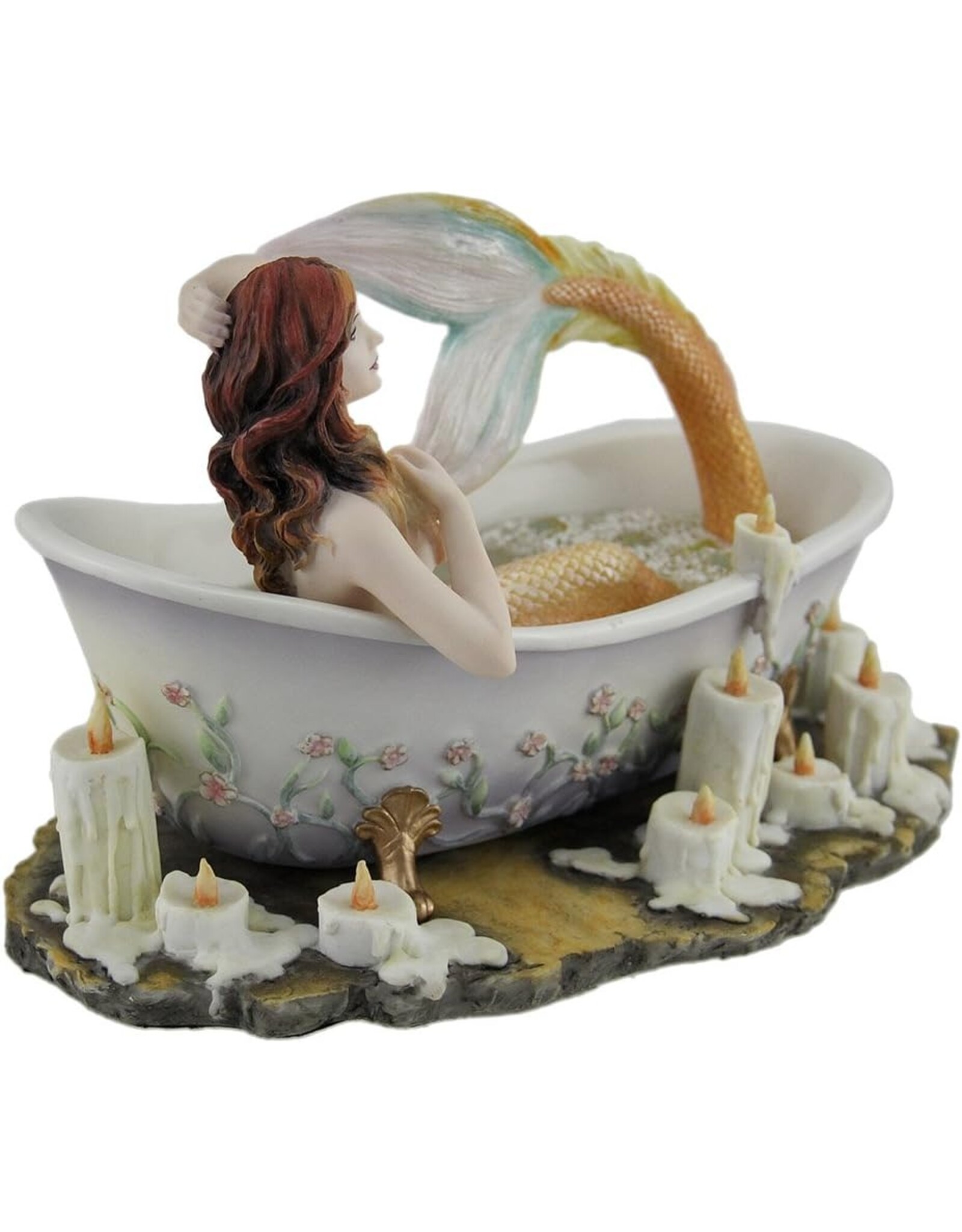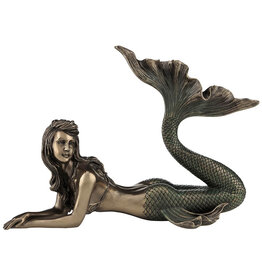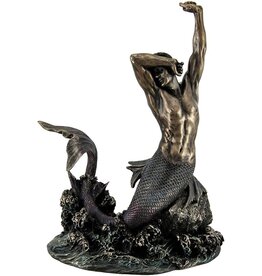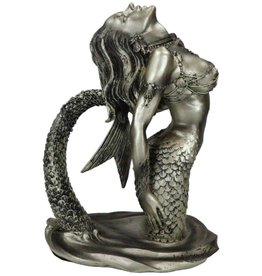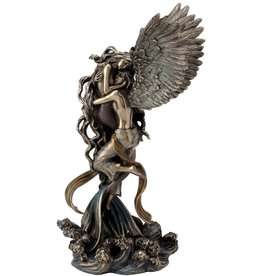Giftware & Lifestyle - Bathtime by Selina Fenech - Mermaid in Bathtub
| Article number: | WU77050AA |
| Availability: | In stock (2) |
| Delivery time: | Orders on working days before 15.00 cet will be shipped same day. All orders after 15.00 cet will be processed next workingday. |
Giftware & Lifestyle
Bathtime by Selina Fenech - Mermaid in Bathtub
- Mythological Mermaid in Bathtub
- Artist: Selina Fenech
- Dimensions: (lxhxd) approx. 22cm x 13.5cm x 13.5cm
- Cast in the finest resin and hand-painted
- Beautiful addition to any mythological collection
- Veronese design
Mythological Mermaid Figurine 22cm
Stories about mermaids date back to ancient times. The mythical creature of the very first merman probably originates with the Babylonians and Sumerians around 5,000 years BC. They knew the god Ea or Enki, the god of fresh waters, who according to mythology is the creator and at the same time saviour of man. He was depicted with a fish tail or with a fish over his head. The Syrian goddess Atargatis was also depicted as a human torso with a fish tail. She is one of the first known forms of a mermaid.
In Greek mythology, sea demons had previously taken up residence in the caves and on the rocks around the Tyrrhenian Sea. Their soft songs lured boaters onto the cliffs. Sirens are first mentioned in Homer's Odyssey, where these half-woman half-bird creatures displayed their charms to Odysseus. Mermaids, sirens with a fish tail, featured in also in the Physiologus, a collection of moralising animal stories, probably written in Greek around the third or fourth century AD by an anonymous author. This Physiologus was a precursor of the popular bestiaria in the Middle Ages. Church fathers used the split personality of mermaids - after all, half woman, half fish - as a sign of distrust. The story of sirens and mermaids was therefore used by the Church in the Middle Ages to warn people about the evils of temptation. At that time, images of mermaids could therefore be found in many churches, monasteries and cathedrals for this reason.


